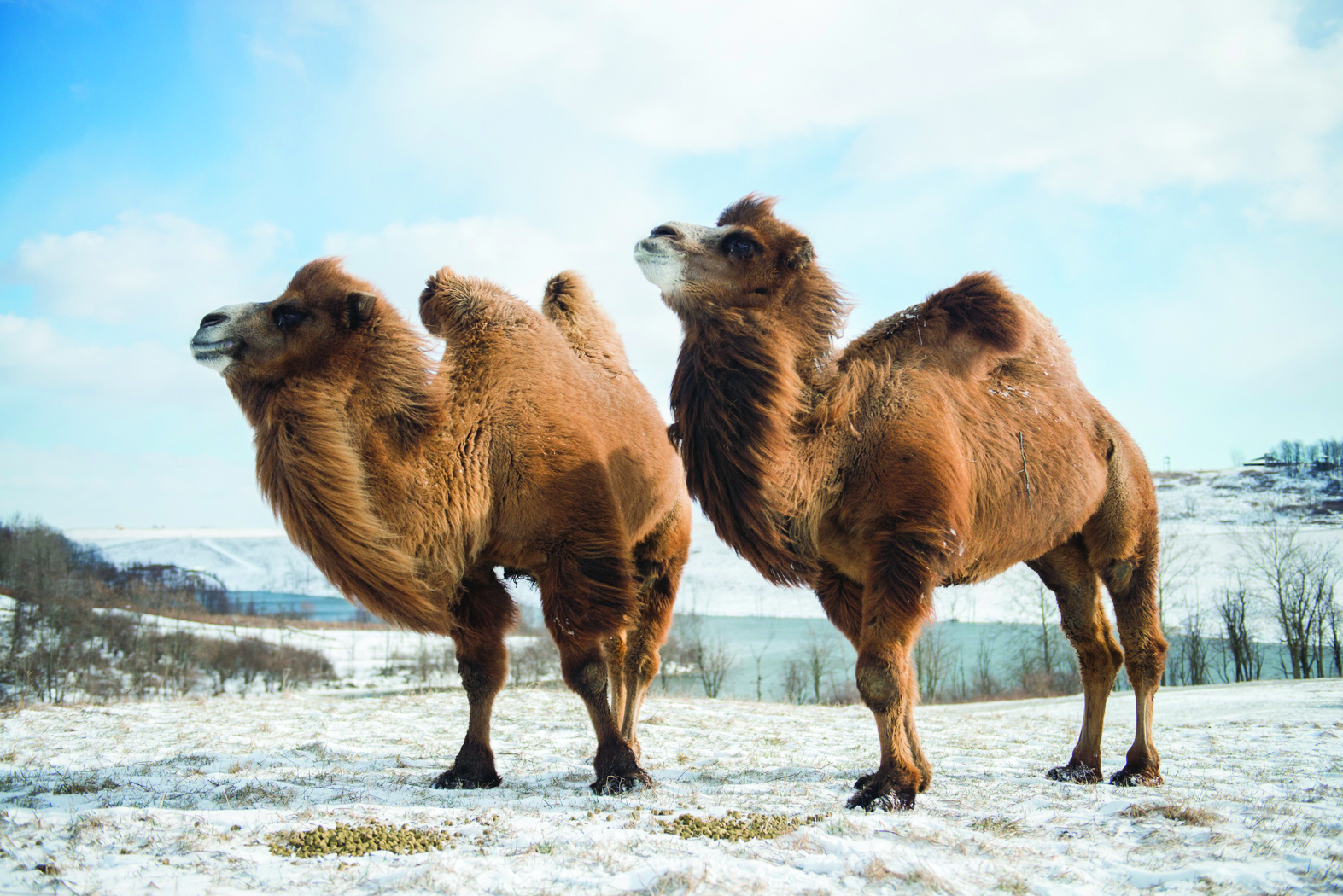
The conservation facility moves about half of its animals to indoor barns during the winter months.
Wednesday, who was born in March, is preparing for her first Ohio winter.
But her parents are not buying her a coat, a hat or gloves. Instead, she’s growing out her fur to withstand the cold temperatures.
To clarify, Wednesday is one of the Bactrian Camels at the Wilds—a private, non-profit conservation facility that occupies nearly 10,000 acres, according to the center’s website.
The center, located in Guernsey County’s Cumberland hills, started hosting animals in 1984 after the land was donated by American Electric Power. The Wilds opened to visitors in 1994, Jennifer Wilson, a spokeswoman for the Columbus Zoo and Aquarium—which manages the Wilds—says.
During the summer months, the roughly 600 animals inhabiting the Wilds roam the facility’s five pastures, says Dan Beetem, the center’s Director of Animal Management.
In the late fall to early spring, this changes. While some of the animals, such as Wednesday and the other Bactrian Camels, are from indigenous environments that see extreme cold temperatures, Beetem says other tenants must be indoors when temperatures drop.
Rather than move these animals to other facilities, the Wilds turns up the heat—literally. “Most of the animals go to places where they have access to a heated barn, yet they’re still outside,” Beetem says. “They’re not living indoors all winter long.”
Not only is the barn air heated, but the floors are warmed as well, giving the animals a toasty place to sit. Still, not every animal is 100 percent content with the great indoors. “Some animals just hang out in the barn where the heat is and some animals would rather be outside,” Beetem says. “It’s not unusual to come in the morning and find a cheetah sitting out in the snow waiting for you to come in and feed.”
Giraffes, the most temperature-sensitive of the Wilds bunch, are a different story. “By late September the giraffes are back at their barn,” Beetem says. “When we start getting overnight temperatures down in the 40s regularly, that’s when we want to have them back where they have some extra shelter.”
But the 50 percent of the animals that stay out in the center’s open pastures all year round also get winter upgrades, as sides are added to the existing summer shade shelters. In addition, the natural tree and brush-filled terrain of The Wilds protect the animals during the snowy months. “They actually use the natural cover out here as much or more than the shelters we give them,” Beetem says.
An animal’s response to frigid temperatures also acts as a vetting tool. “We may have 10,000 acres out here, but we only have so much barn space,” Beetem says, adding that the center is interested in animals such as the Sichuan takin, from western China, because the species is accustomed to the frigid weather. The species stays out in the open pastures year round, opening up barn spaces for other animals. “We have more opportunities for animals that are adapted to the Ohio winters … because there’s more space available to them,” Beetem says.
The 10,000 acres of the Wilds allows animals, such as the Sichuan takin, the space they need to spread out, Beetem says, recalling when the takin first arrived in 2003 at the Wilds. The herd was placed on one side of the lake that connects two pastures when they first arrived and, by the next day, the herd had swam to the other side of the 34-acre lake. “There are a few species
like that, that we know that if they’re in that pasture … that they could be on either side of the lake in one or two different pastures,” Beetem says.
Visitors can see all the open pastures and lakes if they come to the Wilds during its annual visitor season from May to September. The center is open daily from 10 a.m. to 4 p.m., when the last guided tour bus departs from the visitor’s center. In October, the Wilds is only open on weekends, according to the center’s website. Nearly 117,000 people visited the Wilds in 2014, Wilson says.
From November through April, visitors can still see the animals through special reservation-only tours that allow them to drive up next to the animals. “As long as the weather’s good and we can drive, we’ll be out in pasture, looking at the animals and then coming down to visit the barns where the giraffes and the rhinos are in the winter to visit them and see how we take care of animals in the winter,” Beetem says.
The winter tours have become very popular. “We get a lot of visitors who come through in the winter time to see what happens here then,” Beetem says.
As for the roughly 30-member staff working behind the scenes, the winter months are far from chill. Beetem says the staff interacts with the animals every day, checking up on the animals and bringing them food. “The animals that need the support, we got it for them here. The winters here are much harder on the staff then they are the animals,” Beetem says with a laugh.
